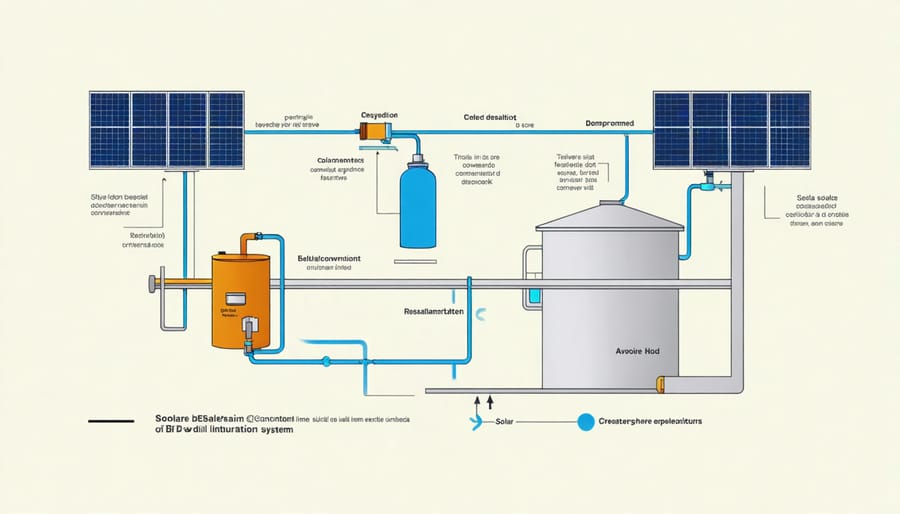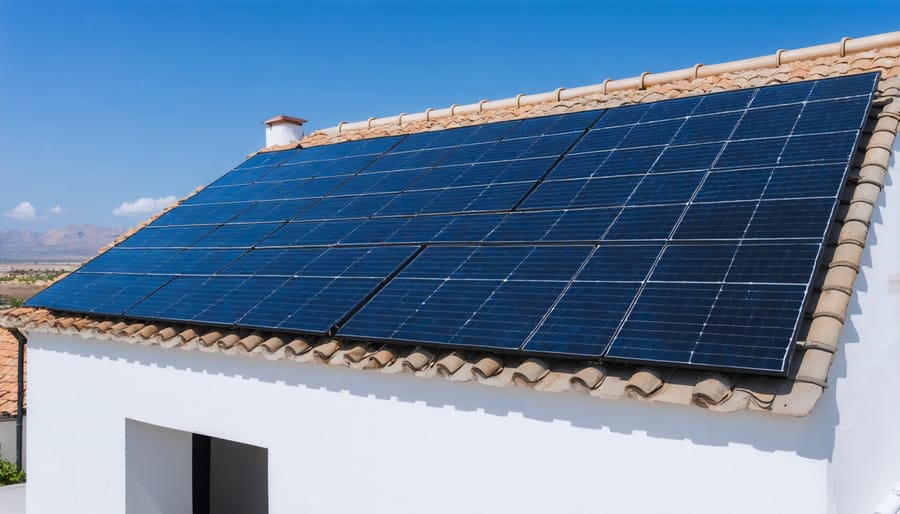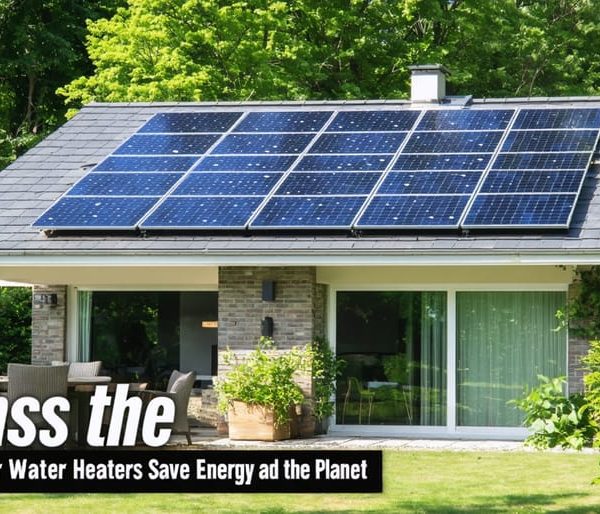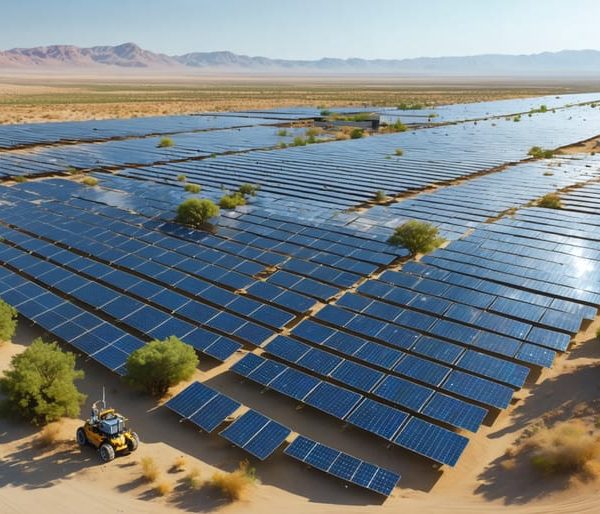Solar-Powered Water Desalination: Clean Water From Sunlight at Home
Harness the sun’s boundless energy to transform seawater into clean, drinkable water through solar-powered desalination – a breakthrough technology reshaping sustainable home water solutions. This innovative process combines photovoltaic panels with efficient membrane technology, producing up to 1,500 gallons of fresh water daily while consuming zero fossil fuels.
In coastal regions worldwide, from California to Australia, these systems are already proving their worth, cutting water costs by up to 70% while eliminating the environmental impact of traditional desalination methods. Forward-thinking homeowners can now install compact, maintenance-friendly units that operate silently and continuously, powered solely by sunshine.
The technology’s elegance lies in its simplicity: solar panels power a high-pressure pump that forces saltwater through specialized membranes, removing 99.9% of contaminants without chemicals or complex machinery. As water scarcity concerns grow globally, this sustainable approach offers a practical, long-term solution for communities and individual households alike.
How Solar Desalination Works

The Solar Collection Process
The heart of our solar-powered desalination system lies in its efficient solar energy collection methods. The process begins with an array of solar panels strategically positioned to maximize sunlight exposure throughout the day. These panels use photovoltaic cells to convert sunlight into electrical energy, which powers the desalination unit’s core components.
Our system employs both direct and indirect solar collection techniques. The direct method uses solar thermal collectors that heat the saltwater directly, while the indirect method converts solar energy into electricity for powering the pumps and filtering mechanisms. Special anti-reflective coatings on the panels ensure that we capture up to 96% of available sunlight, even on cloudy days.
The collected energy is either used immediately or stored in high-capacity batteries for continuous operation during non-sunlight hours. This dual-collection approach ensures consistent performance and maximizes the system’s efficiency, making it a reliable solution for year-round water purification needs.
The Desalination Process
The solar-powered desalination process transforms seawater into clean, drinkable water through a series of efficient steps. First, seawater is collected in solar-powered collection tanks, where it’s pre-filtered to remove large particles and debris. The water then moves to the solar-powered heating chamber, where sunlight concentrated through special panels heats it to create water vapor.
This vapor rises, leaving behind salt and impurities, in a process similar to how nature creates rain. The pure vapor then passes through a cooling system, where it condenses back into liquid form. This condensed water goes through final water purification systems to ensure it meets drinking water standards.
The remaining concentrated saltwater, called brine, is either recycled back through the system or collected for other uses, such as salt production. The entire process runs on solar power, making it both environmentally friendly and cost-effective. What’s remarkable is that this technology mimics nature’s water cycle while using renewable energy to provide clean water for communities worldwide.
Setting Up Your Solar Desalination System
Required Components
To build your solar-powered water desalination system, you’ll need these essential components:
1. Solar Panels: High-efficiency photovoltaic panels (minimum 200W) to convert sunlight into electrical energy.
2. Desalination Membrane: A reverse osmosis (RO) membrane that filters out salt and impurities from water.
3. Water Pumps: Two energy-efficient pumps – one for intake and another for the RO process.
4. Storage Tanks: Two separate tanks for storing untreated water and processed freshwater.
5. Control System: A basic control unit to monitor water flow and system performance.
6. UV Sterilizer: For additional water purification and bacteria elimination.
7. Pre-filters: Sediment and carbon filters to remove large particles before desalination.
8. Pressure Vessels: To house the RO membrane and maintain optimal pressure.
9. Battery Bank: Deep-cycle batteries for energy storage (recommended 24V system).
10. Charge Controller: To regulate power flow between solar panels and batteries.
11. Monitoring Equipment: Basic meters to check water quality and system performance.
12. Plumbing Materials: Food-grade pipes, fittings, and valves for water circulation.
These components are readily available through renewable energy suppliers and water treatment specialists. When selecting parts, prioritize energy efficiency and durability to ensure long-term performance.
Installation Steps
Before beginning installation, ensure you have all necessary permits and have consulted local regulations. Start by selecting a suitable location that receives maximum sunlight throughout the day, ideally facing south in the Northern Hemisphere.
Step 1: Foundation Setup
Prepare a level concrete foundation pad for the solar array and desalination unit. Ensure it’s at least 6 inches thick and properly reinforced to support the equipment’s weight.
Step 2: Solar Panel Installation
Mount the solar panels on sturdy aluminum rails using manufacturer-provided brackets. Maintain a 30-degree tilt angle for optimal sun exposure. Connect panels in series using MC4 connectors, ensuring weatherproof connections.
Step 3: Desalination Unit Placement
Position the desalination unit on a raised platform to prevent flooding. Install protective housing to shield sensitive components from the elements. Ensure proper ventilation around the unit.
Safety Note: Always wear appropriate protective gear, including gloves and safety glasses. Work with a certified electrician for all electrical connections.
Step 4: Plumbing Integration
Connect the intake line to your water source using food-grade PVC pipes. Install the pre-filter system before the main unit. Ensure all connections are properly sealed and pressure-tested.
Step 5: Control System Setup
Mount the control panel in a weatherproof enclosure. Connect the solar array to the charge controller, then to the battery bank if included in your system.
Final testing should include a complete system check under various conditions. Monitor the system closely during the first week of operation to ensure optimal performance.

Maintenance Requirements
Regular maintenance is key to keeping your solar-powered desalination system running efficiently. Clean your solar panels every three months using soft brushes and non-abrasive cleaners to maintain optimal energy production. During cleaning, check for any cracks, loose connections, or debris accumulation.
Inspect the water filtration components monthly, including membranes and filters. Replace pre-filters every 3-6 months, depending on water quality and usage. The main reverse osmosis membrane typically needs replacement every 2-3 years, but this can vary based on water conditions and system use.
Monitor the system’s pressure gauges weekly to ensure proper operation. If you notice significant pressure drops, this could indicate membrane fouling or filter clogging requiring immediate attention. Keep a maintenance log to track cleaning dates, component replacements, and system performance.
Schedule annual professional inspections to verify electrical connections, calibrate sensors, and assess overall system health. This helps prevent major issues and extends your system’s lifespan. Remember to winterize the system in cold climates by draining water lines and protecting exposed components from freezing temperatures.
Benefits and Cost Savings
Environmental Impact
Solar-powered water desalination represents a significant leap forward in sustainable water treatment technology, offering numerous environmental benefits that extend far beyond clean water production. By harnessing the sun’s energy, these systems eliminate the need for fossil fuels traditionally used in desalination processes, significantly reducing carbon emissions and our overall carbon footprint.
The environmental impact is particularly noteworthy when we consider water conservation. Unlike conventional desalination plants that often discharge concentrated brine back into oceans, many solar-powered systems are designed to minimize waste and can even repurpose the salt byproducts for other uses. This helps protect marine ecosystems and coastal habitats from the harmful effects of excess salt concentration.
Another remarkable benefit is the system’s ability to operate off-grid, reducing strain on local power infrastructure. This self-sufficiency means less resource consumption and lower environmental impact during operation. The solar panels used in these systems typically have a lifespan of 25-30 years, making them a long-term sustainable solution.
The technology also promotes local water independence, reducing the need for long-distance water transportation and its associated environmental costs. By producing clean water at the point of use, these systems help minimize the energy and resources typically required for water distribution infrastructure.
What’s particularly exciting is that the components used in solar desalination systems are largely recyclable, contributing to a circular economy and minimizing waste at the end of their life cycle.
Financial Returns
Investing in solar-powered water desalination can yield significant financial returns over time. While the initial setup costs range from $5,000 to $15,000 for residential systems, the solar energy cost benefits typically offset this investment within 5-7 years.
The system can reduce water utility bills by 60-80% annually, depending on your location and water consumption patterns. For a typical household using 2,000 gallons of water per month, this translates to savings of $800-$1,200 per year. Additionally, many regions offer tax incentives and rebates for installing solar-powered water systems, potentially reducing initial costs by 20-30%.
Commercial properties can expect even more substantial returns, with potential savings of $15,000-$25,000 annually for medium-sized operations. The system’s 20-25 year lifespan ensures long-term cost effectiveness, with maintenance costs averaging just $200-$300 annually.
Energy savings are equally impressive, as the system eliminates the need for grid electricity in water processing. This can reduce electricity bills by 30-40% compared to traditional desalination methods. When combined with available renewable energy credits and carbon offset programs, the financial benefits become even more attractive for environmentally conscious investors.

Real-World Success Stories
The Smith family in Arizona transformed their water-scarce property into a self-sustaining haven using a solar desalination system. “Before installing the system, we spent hundreds on bottled water monthly. Now, we produce clean drinking water from our brackish well water, powered entirely by the sun,” shares Sarah Smith. Their system, operational for two years, produces up to 30 gallons of fresh water daily while reducing their carbon footprint.
In California’s Central Valley, the Martinez Farm implemented a large-scale solar desalination project to tackle agricultural water challenges. “The system paid for itself within three years through reduced water purchasing costs and increased crop yields,” explains Jorge Martinez. Their setup processes 500 gallons daily, providing irrigation water for their 15-acre organic farm.
The Coastal Communities Project in Florida demonstrates the technology’s potential for neighborhood-scale implementation. Ten households collaborated to install a shared solar desalination facility, converting seawater into potable water. “Our monthly water bills decreased by 60%, and we’re no longer dependent on municipal water supply during drought periods,” reports community leader Michael Chen.
In Texas, the Desert Springs Resort replaced their conventional desalination system with a solar-powered alternative. “Guest satisfaction improved significantly once we started serving solar-desalinated water,” says Operations Manager Lisa Thompson. “The investment reduced our operating costs by 40% annually.”
The success extends to international locations. A remote coastal village in Mexico installed a community solar desalination plant serving 200 residents. “Access to clean water has transformed our community,” says village elder Rosa Hernandez. “Children no longer miss school due to waterborne illnesses, and local businesses have flourished.”
Commercial property manager David Wilson implemented a rooftop solar desalination system for a 12-story office building in San Diego. “The system provides 75% of our building’s water needs, significantly reducing our environmental impact and operating expenses,” he notes. The project inspired neighboring buildings to adopt similar solutions.
These success stories demonstrate how solar-powered desalination can work effectively across different scales and settings, from individual homes to commercial properties, proving its viability as a sustainable water solution for various applications.
Solar-powered water desalination represents a groundbreaking solution that brings together renewable energy and sustainable water management. As we’ve explored throughout this article, this innovative technology offers numerous benefits, from reducing energy costs to providing clean water in areas where it’s needed most.
The combination of solar power’s unlimited potential and the growing need for fresh water makes this technology particularly appealing for both residential and commercial applications. By harnessing the sun’s energy to purify water, we’re not just solving today’s water challenges – we’re investing in a sustainable future.
Whether you’re a homeowner looking to secure your water supply or a business owner aiming to reduce operational costs, solar-powered desalination systems offer a practical and environmentally friendly solution. The initial investment is offset by long-term savings on energy bills and water costs, while the environmental impact is significantly reduced compared to traditional desalination methods.
As technology continues to advance and become more accessible, there’s never been a better time to consider implementing a solar-powered desalination system. By taking this step, you’re not just investing in your property – you’re contributing to a more sustainable future where clean water and renewable energy work hand in hand.
Remember, every installation adds to the growing momentum of sustainable water solutions. Together, we can make clean water accessible while protecting our planet for future generations.











